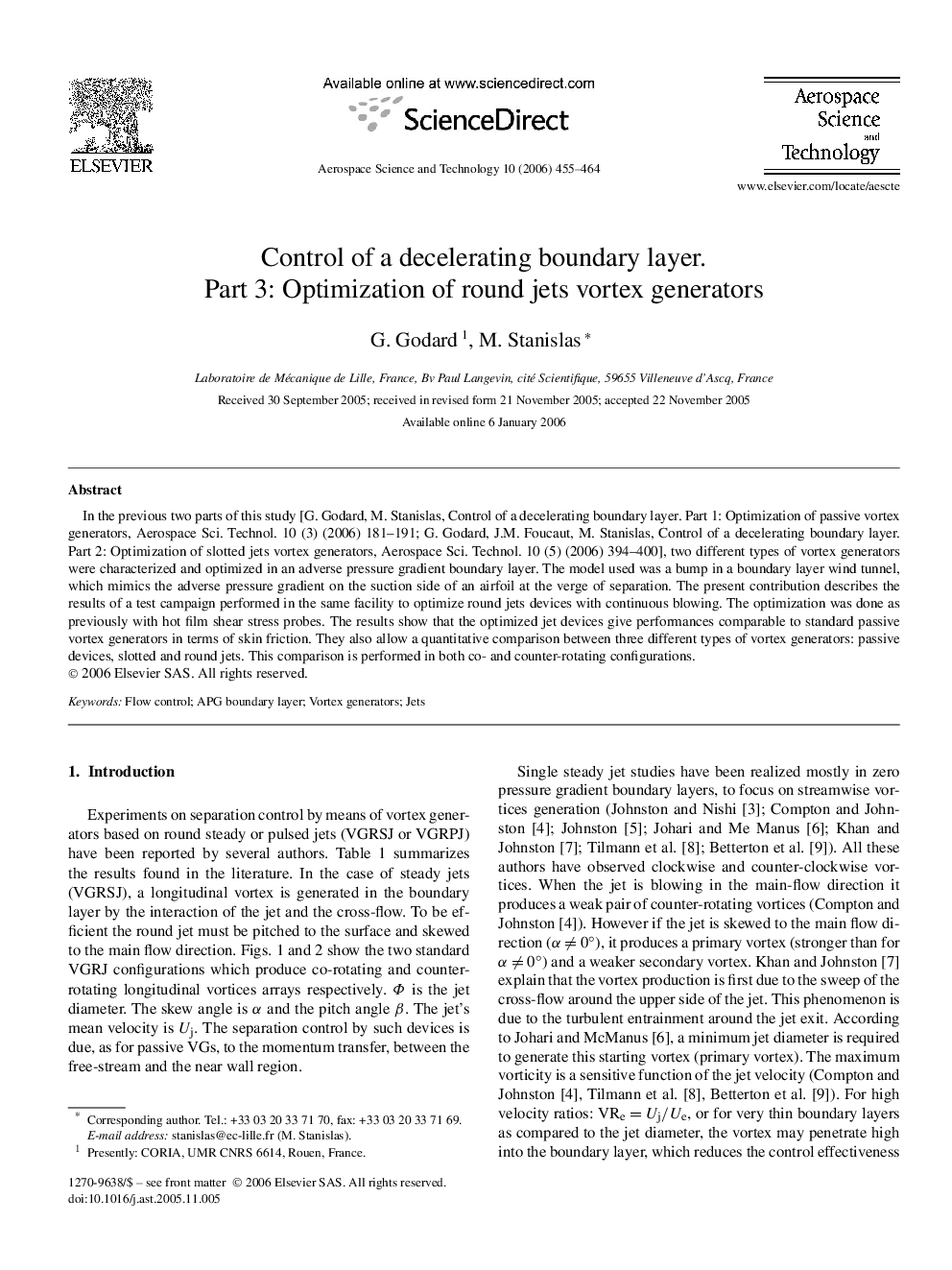| Article ID | Journal | Published Year | Pages | File Type |
|---|---|---|---|---|
| 1719001 | Aerospace Science and Technology | 2006 | 10 Pages |
In the previous two parts of this study [G. Godard, M. Stanislas, Control of a decelerating boundary layer. Part 1: Optimization of passive vortex generators, Aerospace Sci. Technol. 10 (3) (2006) 181–191; G. Godard, J.M. Foucaut, M. Stanislas, Control of a decelerating boundary layer. Part 2: Optimization of slotted jets vortex generators, Aerospace Sci. Technol. 10 (5) (2006) 394–400], two different types of vortex generators were characterized and optimized in an adverse pressure gradient boundary layer. The model used was a bump in a boundary layer wind tunnel, which mimics the adverse pressure gradient on the suction side of an airfoil at the verge of separation. The present contribution describes the results of a test campaign performed in the same facility to optimize round jets devices with continuous blowing. The optimization was done as previously with hot film shear stress probes. The results show that the optimized jet devices give performances comparable to standard passive vortex generators in terms of skin friction. They also allow a quantitative comparison between three different types of vortex generators: passive devices, slotted and round jets. This comparison is performed in both co- and counter-rotating configurations.
